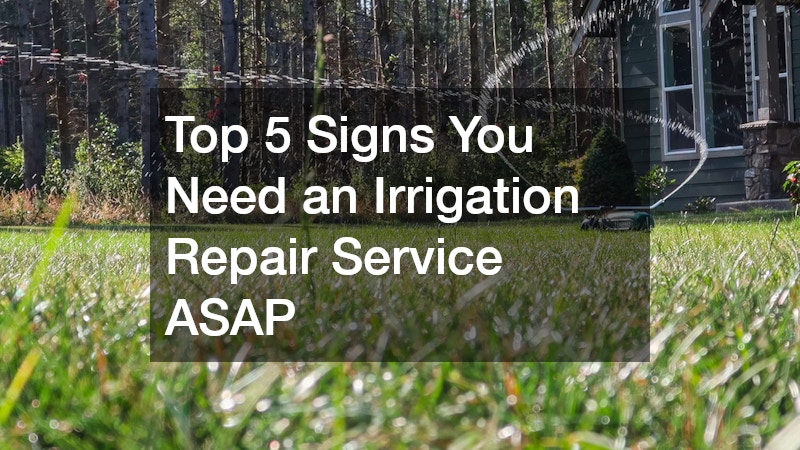
When it comes to replacing the roof of a commercial building, numerous factors need to be considered to ensure a smooth and successful project. The complexity of commercial roofing replacement often leads to several common mistakes that can be avoided with proper planning and execution. From choosing the right materials to correctly timing the replacement, each step in the process has its own set of potential pitfalls. In this article, we’ll discuss various errors that property managers and building owners often encounter during such projects. We’ll cover insights on how to avoid these mistakes by working with local experts and specialists, understanding common roofing issues, and selecting the appropriate materials and techniques for your particular needs. Whether you’re dealing with flat roofing systems or metal roofing issues, you’ll find valuable advice to help you navigate the challenges of commercial roofing replacement. By focusing on the right strategies and solutions, you can ensure that your roofing project is completed successfully and within budget, ultimately extending the lifespan and improving the efficiency of your commercial property.
Avoiding Pitfalls by Working With Local Experts

One of the most significant advantages of collaborating with local experts is their in-depth knowledge of local building codes and weather conditions. Hiring professionals who understand the specific requirements of your area can help you navigate the complexities of commercial roofing replacement more effectively. These professionals are familiar with the challenges posed by local climates, which allows them to recommend the most suitable materials and techniques for your project.
In addition, local roof repair experts are often more accessible for ongoing maintenance and emergency repairs after the initial roofing project is completed. This proximity ensures that any issues that arise are quickly addressed, thereby extending the lifespan of your new roof. By maintaining a good relationship with your local roofing specialists, you can ensure that your commercial roofing replacement project receives the necessary attention over time.
Working with local experts also means supporting the local economy and community. By hiring local professionals, you contribute to the growth and sustainability of businesses in your area. Additionally, local companies tend to have a reputation to uphold within the community, which often translates to higher-quality workmanship and customer service.
Common Metal Roofing Issues and How to Fix Them

Metal roofs are popular for commercial properties due to their durability and long lifespan. However, they are not without their issues. One common problem is the formation of rust, which can compromise the integrity of the metal panels. To address this issue, it’s essential to use a high-quality rust-inhibiting primer and ensure that the metal is properly coated and sealed during installation.
Another frequent challenge with metal roofing is leaks, which can occur due to improper installation or damage to the roofing panels. Local metal roofers are well-equipped to identify and repair leaks, utilizing specialized techniques and materials to ensure a watertight seal. Regular inspections and maintenance by experienced professionals can help prevent leaks and other problems from escalating.
Temperature fluctuations can also cause metal roofing panels to expand and contract, leading to potential gaps and loose fasteners. To mitigate this issue, it’s crucial to use flexible materials that can accommodate these movements. Additionally, proper installation techniques, such as allowing for thermal expansion and contraction, can help maintain the integrity of your commercial roofing replacement over time.
Common Errors in Handling Flat Roof Systems

Flat roofs are a common choice for commercial buildings due to their cost-effectiveness and ease of installation. However, they require specific handling to avoid common mistakes that can lead to costly repairs. One of the most frequent errors is inadequate drainage, which can result in water pooling and subsequent leaks. Ensuring a proper drainage system, such as installing appropriate slopes and gutters, is essential for preventing water-related issues.
Another common mistake is using incompatible materials that can lead to premature wear and tear. It’s crucial to select materials specifically designed for flat roofing applications to ensure longevity and performance. Consulting with experts who specialize in commercial roofing replacement can help you make informed decisions and avoid material-related problems.
Poor installation practices can also compromise the effectiveness of flat roofing systems. For example, improper sealing of seams and joints can lead to leaks and water infiltration. Hiring experienced professionals with a proven track record in flat roofing installations can help ensure that your commercial roofing replacement is executed correctly, minimizing the risk of future issues.
Choosing the Right Roofing Material for Your Project

Selecting the appropriate roofing material is a critical decision in any commercial roofing replacement project. Different materials offer varying levels of durability, energy efficiency, and cost-effectiveness. For instance, asphalt shingles are a popular choice due to their affordability, but they may not provide the same level of longevity as metal or TPO roofing.
Consulting with reputable roofing companies can help you evaluate the pros and cons of each material option for your specific needs. Expert advice can guide you in selecting a material that balances performance, cost, and aesthetic considerations. Factors such as local climate conditions and the type of building can also influence the suitability of different materials.
Another important aspect to consider is the long-term maintenance requirements of each material. Some materials, like metal roofing, may require periodic inspections and rust prevention treatments, while others, like single-ply membranes, may need regular cleaning and maintenance. Understanding the upkeep involved can help you make an informed decision and ensure the longevity of your commercial roofing replacement project.
Essential Tips for Working with a Commercial Roofing Specialist
Partnering with a commercial roofer who has extensive experience in commercial roofing replacement projects is crucial for achieving successful outcomes. Start by researching potential contractors and verifying their credentials, including licenses, insurance, and certifications. Reading reviews and seeking recommendations from other property owners can also help you identify reliable specialists.
Clear communication is key to a successful partnership with a commercial roofer. From the initial consultation through the completion of the project, maintaining open lines of communication ensures that expectations are met and any potential issues are promptly addressed. Regular progress updates and site visits can help keep the project on track and within budget.
It’s also essential to have a detailed contract in place that outlines the scope of work, materials to be used, timelines, and payment terms. This contract serves as a reference point throughout the project and helps prevent misunderstandings or disputes. A well-drafted contract protects both parties and ensures a smooth commercial roofing replacement process.
Integrating Chimney Maintenance with Your Roofing Project
Chimneys are often overlooked during commercial roofing replacement projects, but they play a crucial role in the overall integrity of the roofing system. Ensuring that your chimney is properly maintained and integrated into the new roof helps prevent leaks and structural damage. Engaging professional chimney services to inspect and repair any issues before or during the roofing project is a wise investment.
Common chimney-related issues include cracked bricks, damaged mortar, and deteriorating flashing. Addressing these problems promptly can prevent water infiltration and other issues that could compromise the new roofing system. Properly sealing and flashing the chimney during the commercial roofing replacement process ensures a watertight connection between the roof and chimney structure.
Additionally, regular chimney maintenance, such as cleaning and inspection, should be scheduled as part of your ongoing roof care. This proactive approach helps identify potential issues early and ensures that your commercial roofing replacement investment remains protected over the long term.
Managing Your Roof Top Unit During a Roofing System Replacement
Roof top units (RTUs) are crucial components of many commercial buildings, providing heating, ventilation, and air conditioning (HVAC) services. During a commercial roofing replacement project, it’s essential to carefully manage and protect these units to prevent damage and ensure they continue to function properly. Proper planning and coordination with HVAC professionals can help avoid issues related to RTU removal and reinstallation.
One common mistake is neglecting to power down and disconnect the RTUs before starting the roofing work. This oversight can lead to electrical hazards, equipment damage, and interruptions to building operations. Ensuring that the RTUs are safely powered down and properly sealed off during the roof replacement helps protect both the equipment and the workers.
After the new roof is installed, it’s crucial to check the integrity and function of the RTUs before bringing them back online. This includes inspecting the units for any damage, ensuring that the connections are secure, and verifying that the units are properly balanced. Regular maintenance and inspections of the RTUs as part of your commercial roofing replacement project can help prevent future issues and extend the lifespan of both the roof and the HVAC equipment.
How to Ensure Your Replacement Is Well-Timed
Timing is a critical factor in the success of a commercial roofing replacement project. Choosing the right time to undertake the replacement can help minimize disruptions to your business operations and reduce the impact of weather-related issues. Scheduling your project during the off-season for your industry or when weather conditions are more favorable can help ensure a smoother process.
One of the benefits of scheduling a local roof replacement during favorable weather conditions is the reduced risk of delays due to rain, snow, or extreme temperatures. Additionally, weather that is neither too hot nor too cold can ensure better material performance and adherence during installation. Collaborating with local experts who understand your region’s climate can help you plan an optimal schedule for your commercial roofing replacement.
Another important consideration is coordinating with other ongoing or planned building projects. Aligning your roof replacement with other maintenance or renovation efforts can help streamline construction activities and minimize disruptions. Careful planning and clear communication with all parties involved will ensure a well-timed and efficient commercial roofing replacement.
Addressing Health Concerns During Roofing Work
Health and safety are paramount during any commercial roofing replacement project. Addressing potential health concerns, such as mold growth, is crucial for protecting building occupants and ensuring a safe work environment. Mold damage restoration services can help identify and mitigate mold issues before they become a major problem during the roof replacement.
One common health concern associated with roofing projects is the presence of asbestos in older roofing materials. Proper handling and disposal of asbestos-containing materials are essential to prevent exposure and contamination. Engaging qualified professionals to conduct asbestos testing and abatement can ensure a safe and compliant commercial roofing replacement process.
Additionally, ensuring proper ventilation and air quality during the roofing work protects both the workers and the building occupants. Implementing measures such as air scrubbers, sealing off work areas, and maintaining good communication with building occupants can help mitigate health risks and ensure a smooth project execution.
Improving Building Efficiency with Proper Commercial Insulation
Insulation plays a critical role in the energy efficiency and comfort of commercial buildings. Proper commercial insulation during a roofing replacement project can help reduce energy costs, improve indoor comfort, and enhance the overall performance of the building envelope. Choosing the right insulation materials and techniques is key to achieving these benefits.
There are various types of insulation materials available for commercial roofing applications, including fiberglass, foam board, and spray foam. Each type offers different levels of thermal resistance, moisture control, and installation complexity. Consulting with experts can help you determine the most suitable insulation options for your specific needs and budget.
In addition to selecting the right insulation materials, proper installation techniques are crucial for maximizing efficiency. This includes ensuring a continuous thermal barrier, sealing gaps and penetrations, and addressing potential thermal bridges. Well-insulated roofs can significantly improve the building’s energy performance, reduce HVAC loads, and contribute to a more sustainable commercial roofing replacement project.
A successful commercial roofing replacement project requires careful planning, collaboration with experienced professionals, and attention to detail. By understanding and avoiding common mistakes, you can ensure a smooth and efficient process that protects your investment and enhances the longevity of your roofing system. From selecting the right materials to coordinating with local experts and addressing health and safety concerns, each aspect of the project plays a crucial role in its success. Engaging local roof repair specialists, metal roofers, and chimney services can provide valuable insights and support throughout the project, ensuring that your new roof meets all necessary standards and performs optimally. Additionally, considering factors such as timing, insulation, and rooftop unit management can further enhance the efficiency and effectiveness of your commercial roofing replacement project. By taking a proactive and informed approach, you can achieve a roofing system that not only meets your current needs but also stands the test of time, providing long-term value and protection for your commercial property.


